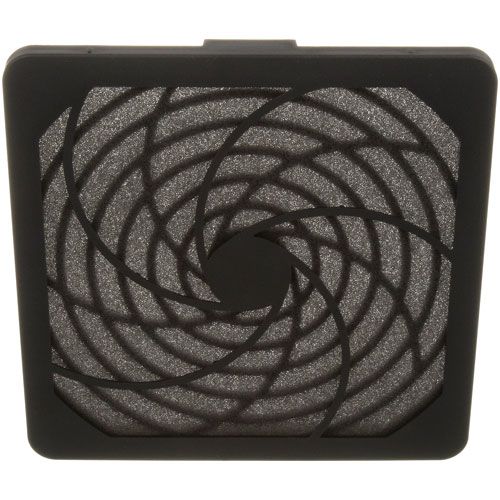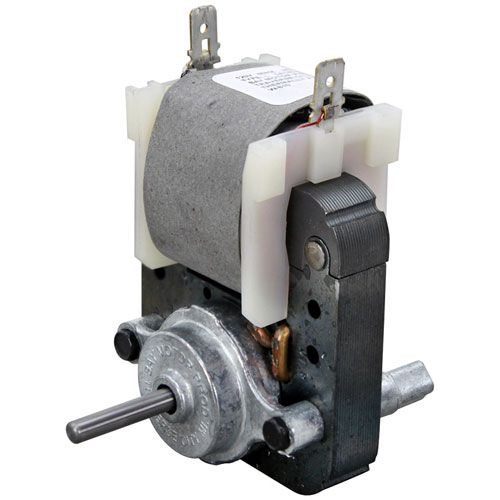Commercial Restaurant Kitchen Cleaning Guide: Daily, Weekly, and Monthly
In the restaurant industry, maintaining a pristine and hygienic kitchen is paramount. It's not just about complying with food safety regulations, but also about safeguarding the health and well-being of both customers and staff. This is where food safety practices come into play, encompassing all the measures taken to ensure that the food served is safe for consumption. Oversight of food safety typically falls under the jurisdiction of governmental agencies like the Food and Drug Administration (FDA) in the United States. Regular inspections by health officials are crucial to ensuring that restaurants adhere to food safety standards. These inspections scrutinize various aspects, such as kitchen cleanliness, food handling procedures, and compliance with regulations.
Hence, restaurant owners and staff must implement a comprehensive kitchen cleaning regimen to meet and exceed these standards. However, in the fast-paced environment of a commercial kitchen, maintaining cleanliness can pose a significant challenge. To address this, we've devised an extensive restaurant kitchen cleaning checklist covering daily, weekly, and monthly tasks. This checklist serves as a guide for restaurant owners and managers, facilitating the creation of an organized cleaning schedule that is both efficient and manageable.
| Table of Contents: Back-of-house maintenance plan Front-of-house cleaning list |
Back-of-house maintenance plan
Maintaining cleanliness in the back of the house is essential for the smooth operation of any restaurant kitchen. A thorough cleaning regimen not only extends the lifespan of equipment but also contributes to a pleasant dining experience for customers. Professional cleaning services play a crucial role in ensuring that all kitchen areas, from floors to equipment, are thoroughly sanitized using specialized techniques and products.
Daily cleaning checklist
To uphold cleanliness standards and promote safe food handling practices, adhering to a structured cleaning checklist is imperative. Here's a daily cleaning checklist for the back-of-house commercial kitchen:
Step 1: Cleaning cooking equipment
- Fryers: Drain grease, scrub interior surfaces, clear drain lines of food particles, and wipe down exteriors.
- Griddles: Scrap off residual grease and food, clean according to manufacturer instructions, and empty waste drawers.
- Flattops: Remove accumulated food and grease, and clean per manufacturer guidelines.
- Ranges: Degrease surfaces, disassemble parts for washing, air dry, and reassemble.
- Steam tables: Empty water, scrub with mild soap, rinse, and air dry.
- Vent hoods: Wipe down with a damp cloth to remove grease and stains.
- Grease traps: Scrap clean, remove water, and wipe dry.
- Dishwasher hood filters: Remove filters, soak in hot water and soap, scrub, and air dry.
Step 2: Clean kitchen tools
- Utensils: Pre-soak if necessary, rinse, load into the dishwasher, and ensure all soap residue is rinsed off.
- Glassware: Pre-soak if needed, rinse, load into the dishwasher, and rinse off any remaining soap.
- Flatware: Pre-soak if required, rinse, load into the dishwasher, and rinse off any lingering soap.
- Smallwares: Pre-soak if necessary, rinse, load into the dishwasher, and ensure all soap residue is rinsed off.
Step 3: Disinfect or sanitize surfaces and areas
- Sinks: Wash, sanitize, and follow the instructions on the sanitizer label.
- Drains: Scrub drains with a drain brush and run water through them.
- Soda fountains: Clean, wipe, and sanitize all surfaces and components.
- Dispenser heads: Wash dispensers, remove nozzles, soak, and disinfect.
- Countertops and prep areas: Use a food-safe sanitizer, then wipe dry.
- Cutting boards: Clean with an appropriate agent; and air dry.
- Waste disposal areas: Empty trash, and clean surfaces with a suitable solution.
Step 4: Wash clothes
- Floor mats: Scrub both sides with soapy water, rinse thoroughly, and hang to dry.
- Towels: Launder in a regular washing machine and dryer.
- Aprons: Wash and dry on a regular cycle.
Step 5: Clean walls and ceilings
- Walls: Use a damp cloth or sponge to remove grease or food stains.
- Ceilings: Use a damp cloth to remove grease or food stains.
Step 6: sweep and mop
- Sweep with a broom and dustpan, mop with water and degreaser, then mop again with water and bleach.
- Sweep and mop under stoves and cooking appliances if accessible.
- Walk-in Freezers and Refrigerators: Remove mats, sweep, and mop floors thoroughly.
- Storage Areas: Sweep and mop floors after removing containers and bins.
We have all of the parts and components for commercial kitchen equipment at PartsFe.Ca, so you can keep your appliances operating correctly every day. We carry components for all of the major brands of commercial kitchen equipment, from dishwasher racks and refrigerator gaskets to stove knobs and oven thermostats.
Step 7: Clean and vacuum
- Trash Cans: Empty, replace bags, and wipe off any food stains.
- Recycling Bins: Rinse off food stains and remove recyclable items.
Weekly cleaning checklist
|
Task |
Instructions |
Equipment/supplies needed |
|
Commercial kitchen equipment cleaning |
- Clean oven according to owner's manual instructions. |
Oven cleaner, scrub brush |
|
- Empty and clean fridge/freezer inside and out. |
Cleaning solution, sponge |
|
|
- Clean the coffee machine as per the manufacturer's instructions. |
Coffee machine cleaner |
|
|
- Deep clean fryers by boiling water to remove grease, then rinse. |
Boiling water, degreaser |
|
|
- Scrub drains with soapy water, sanitize and rinse. |
Soapy water, sanitizer |
|
|
Degrease walls and doors |
- Walls: Scrub with degreaser. |
Degreaser, scrub brush |
|
- Doors: Use degreasing spray and cloth. |
Degreasing spray, cloth |
|
|
Delime sinks, faucets, and dishwashers |
- Sinks/faucets: Scrub with water and deliming solution. |
Deliming solution, scrub brush |
|
- Dishwasher: Run deliming solution through dishwasher, and wipe interior. |
Deliming solution, cloth |
|
|
Spot clean gas pipes and water hoses |
- Brush pipes to remove buildup, wipe with a damp cloth. |
Brush, damp cloth |
|
- Wipe down water hoses with a damp cloth. |
Damp cloth |
Monthly cleaning checklist
|
Task |
Instructions |
Equipment/supplies needed |
|
Wash, Sanitize, and Empty |
- Behind Equipment: Sweep, dust, and mop behind appliances. |
Broom, dustpan, mop, and cleaning solution |
|
- Walls: Clean with water and cleaning solution, dry with cloth. |
Cleaning solution, cloth |
|
|
- Grease buildup: Scrape off, apply degreaser, and degreaser, rinse. |
Scraper, degreaser |
|
|
- Ceilings: Remove ceiling tiles, vacuum/dust grid, and wash tiles. |
Vacuum, duster, and cleaning solution |
|
|
- Refrigerators/freezers: Empty, wipe inside/outside, sanitize inside, vacuum condenser/coils. |
Cleaning solution, vacuum cleaner |
|
|
- Floors: Sweep, mop, and use floor scrubber for shine. |
Broom, mop, and floor scrubber |
|
|
- Ice machines: Follow the manufacturer's cleaning instructions, wipe the exterior, and clean the condenser/filter. |
Manufacturer's cleaning instructions |
|
|
- Pest/rodent droppings: Clean affected areas. |
Cleaning solution, gloves |
Front-of-house cleaning list
When customers walk inside your restaurant, they will notice the front of the house first. Therefore, keeping the front of the house clean is crucial to creating a comfortable dining atmosphere in today's setting. Here, looks do count. Ensure that better cleaning is visible to your guests.
Daily cleaning checklist
During the shift:
- Routinely sanitize door handles, railings, seats, and table tops, especially during health emergencies.
- Wipe down tables after each use, and remove condiments kept out.
- Spot-clean windows and glass doors.
- Ensure the tables are neatly set and stocked.
- Regularly check and maintain spotless restrooms.
When closing out:
- Prepare dishes and napkins for the next shift.
- Clean menus with spray and wipe.
- Sanitize all restroom surfaces.
- Clean and mop floors.
- Vacuum carpets to remove debris and trash.
Weekly cleaning checklist
Once a week:
- Clean corners and nooks inaccessible to the vacuum.
- Dust all furniture and surfaces.
- Wipe down mirrors and glass surfaces.
- Scrub restrooms thoroughly.
- Tend to any live plants.
Monthly cleaning checklist
Once a month:
- Inspect carpeting, drapes, and furniture for holes or damage.
- Deep, clean restrooms.
- Remove dust and cobwebs from ceiling fans.
Any commercial restaurant's ability to succeed hinges on having a sanitary and spotless kitchen. Restaurant owners and employees may make sure that their kitchen is hygienic, safe, and compliant with regulations by adhering to a detailed cleaning checklist on a daily, weekly, and monthly basis.
FAQs
What are the essential daily cleaning tasks for a commercial restaurant kitchen?
Essential daily cleaning tasks for a commercial restaurant kitchen encompass thorough cleaning and sanitization of food preparation surfaces, utensils, and equipment. It is also essential to maintain the cleanliness of sinks, drains, and garbage disposal areas.
How often should kitchen equipment be deep cleaned in a restaurant?
The frequency of deep cleaning for kitchen equipment in a restaurant should involve daily attention to countertops, cutting boards, and utensils. Weekly deep cleaning is advised for ovens, grills, fryers, and range hoods, while monthly deep cleaning should target refrigerators, freezers, and walk-in coolers.
What are some common cleaning products and solutions used in commercial kitchens?
Common cleaning products and solutions used in commercial kitchens encompass degreasers, sanitizers, floor cleaners, stainless steel cleaners, and drain treatments.
How can restaurant staff ensure food safety during kitchen cleaning procedures?
To ensure food safety during kitchen cleaning procedures, restaurant staff should employ color-coded cleaning tools to prevent cross-contamination, store cleaning chemicals away from food prep areas, adhere to proper handwashing protocols, clearly label cleaning products, and provide training on the safe and accurate usage of cleaning chemicals.















